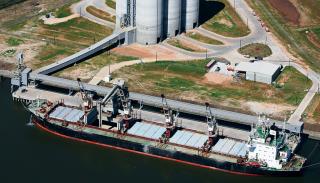The Global Cement Report Ninth Edition listed Russia as the world’s seventh-largest cement consuming country. Plant modernisation and regeneration is back on the agenda for the nation’s cement industry. While cement demand has fallen in recent years, it is now increasing and, with a full order book of mega-sized construction projects, Russia’s cement market is climbing back up the consumption league ladder.
Russia’s economy has been performing well. McGraw-Hill analysts report that consumer lending, which reached a double-digit rate in 2011, is expected to underpin consumer demand in 1Q12. Standard & Poor’s (S&P) says Russia’s economy will enter 2012 with “strong momentum,” but believes it is likely to slow. Consumer spending will underpin growth in the 1H12, although S&P suggest that the Central Bank is predicted to curb credit growth in the 2H12, while fixed capital investment will also shrink as lending is tightened.
Meanwhile, the IMF predicts GDP growth to slow from 4.1 per cent in 2011 to 3.5 per cent in 2012, mainly because of significant risks emanating from a spill-over from the financial effects of the eurozone crisis.
The government has also postponed regulated tariff hikes on electricity and gas prices to July, keeping inflation around five per cent for the next two years. Morgan Stanley puts the annual rate at 5.4 and 5.3 per cent for 2012 and 2013, respectively.
While oil prices remain strong, Russia is similarly vulnerable to falls in prices as the sector makes up 10 per cent of GDP. According to the IMF, structural reforms are also required to advance the overall investment climate.
On the political front, the level of popular protests against the prime minister and his ruling United Russia did not prevent Vladimir Putin from gaining re-election for the third time to the president’s office on 4 March 2012. Although many Muscovites are adamant in their opposition, Mr Putin has brought stability to Russia’s economy.
Looking forward, some of Putin’s key decisions in the next presidency will concern energy with significant investment and construction opportunities ahead. Over US$200bn could be invested in power plants by 2020. The average age of the country’s power plants is 32 years and most of these are hydropower stations with the newer facilities tending to be nuclear-based. Russia is also keen to develop potentially significant oil and gas resources in the Arctic and Black Sea that should attract joint ventures and foreign investment. In addition, the government is due to review its offshore resource development programme through to 2030.
Construction
Some 3.6Mm2 of new office space will be constructed in Moscow with about half of this volume already underway. There is also a trend for green buildings, as firms look to conform to the 261-FZ Energy Efficiency law that offers tax incentives for buildings with energy savings and increased energy efficiency.
There is similarly-growing investment in infrastructure construction. Large projects such as the ATES I Summit 2012, the 2014 Sochi Winter Olympics and the FIFA World Cup in 2018 are all boosting construction sector activity.
These big construction projects will be supplemented by developments in road building and housing. Russia’s road infrastructure is particularly underdeveloped. The government will spend RUB12.2trn (US$430bn) on Russia’s transport system between 2011-15.
A 2010 government study established that residential and social building projects make up 80 per cent of building material end-markets. Russia is behind most western countries for living and commercial space per capita. According to government statistics, Russia’s 1980-87 baby boom generation is now ready to seek better housing, which is a problem as the current housing stock is low. “Housing construction is expected to grow at an average annual rate of 6.8 per cent between 2011-15,” TKB Capital forecasts.
TKB Capital also estimates annual domestic housing construction to grow 6.8 per cent between 2011-15, while the Ministry for Regional Development has forecast an expansion of 9.3 per cent for the period.
Construction activity is particularly booming in Krasnoyarsk City with about 2000 building projects ongoing. Housing developments dominate the city’s construction sector. In spite of the financial crisis, Krasnoyarsk has remained a national leader in terms of new housing commissioned per capita for the last three years. In 2009, 469,000m2 of housing space was commissioned in the city. This construction boom is boosting the development of the building materials industry.
Over in the Ulyanovsk region in the west, capital investment from January to September 2011 rose by 125 per cent YoY with companies investing more than RUB33bn in the region’s economy.
There are currently 95 investment projects active in the Ulyanovsk region including the ongoing Ulyanovskshifer LLC’s cement plant modernisation (see Table 1).
Cement consumption
After reaching a peak of 430kg in 2008, per capita cement consumption plunged to 311kg in a difficult 2009. Since then, the market has been recovering and in 2010 the figure rose to 355kg. According to the Federal State Statistics Service, the Volgograd and Krasnodar territories led this revival. Last year, per capita consumption increased 15.2 per cent to 409kg, or a total cement demand of 57.2Mt, and is well on its way to pre-crisis levels, analysts at Morgan Stanley predict.
